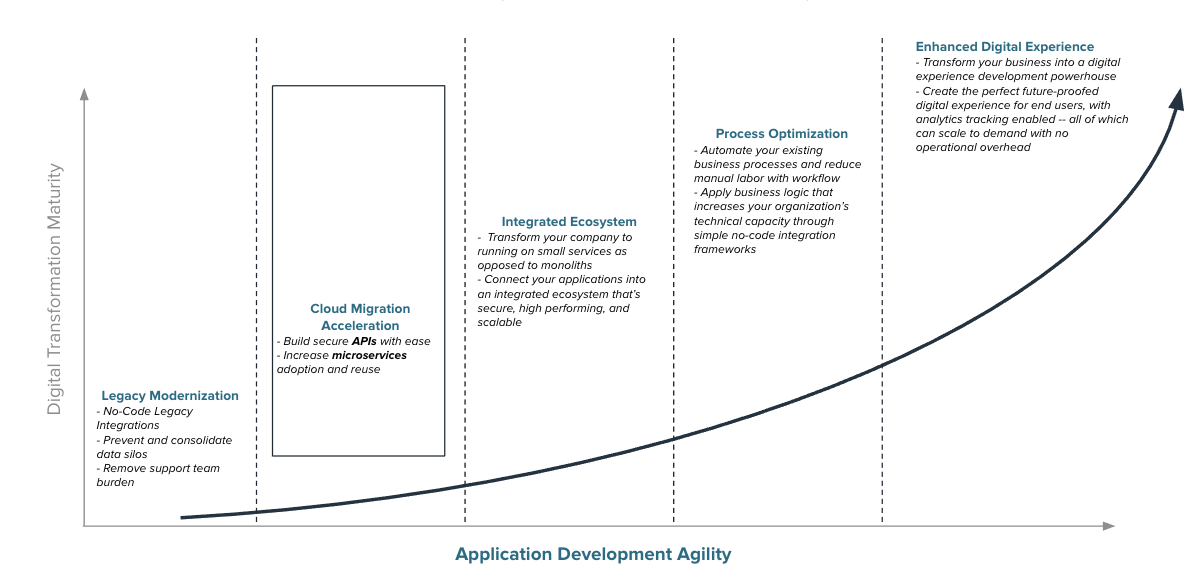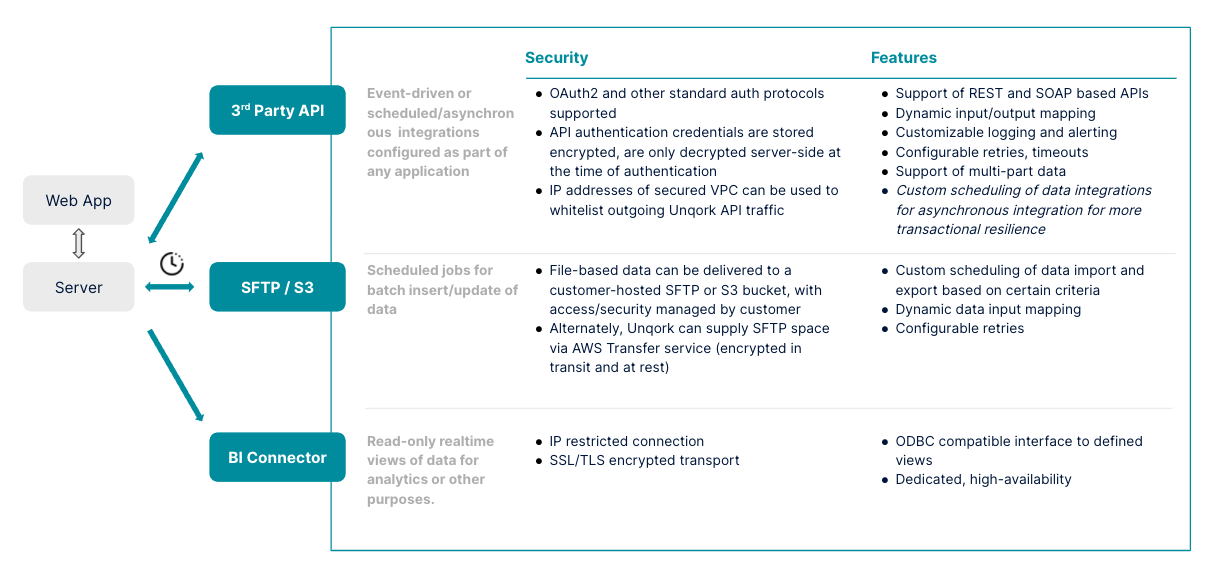Introduction
There’s a lot of buzz in the enterprise tech space surrounding microservices1, an approach to software design in which systems are built using multiple, loosely-coupled component services. And with good reason.
Microservices provide many benefits over traditional “monolithic” architectures in which all components are interconnected and interdependent within a single codebase. In a monolithic approach, each component must be present in order to execute or compile code—and if any particular component has to change, the entire application must be redeployed.
Building with microservices provides a number of benefits to organizations, including:
- Ease of deployment: Microservice-based applications are modular and smaller than applications built using traditional development methods, making them easier to build and deploy
- Increased scalability: Microservices remain functional in the midst of large size or volume changes, making it simple for enterprises to scale up as business needs adjusting
- Increased resilience: Once you build fault tolerance into your microservices and their dependencies with one another, microservices will run as independent units that don’t impact one another—one failure won’t take down your entire application. This helps increase uptime, promote business continuity, and boost performance.
- Faster time-to-market: Since microservices support more agile updates and evolutions, you can shorten development cycles with a microservice architecture, allowing you to have multiple teams working in parallel
- Future-proofed business operations: Organizations can easily create reusable microservices that will speed up development times and help you adapt quickly to changes. This reusability enables you to share and repurpose microservices across your enterprise, so your application can grow with your organization and keep up with technological trends.
While the microservices trend has been driven and enabled by the ubiquity of modern cloud-based services and standardized APIs that allow disparate components to be seamlessly stitched together, no-code is the technology that will empower organizations to realize the full potential of this new paradigm.
Microservices to the power of no-code
Microservices are far more compatible with the needs and expectations of the modern enterprise. However, when using a traditional code/low-code-based approach, there have been a few drawbacks compared to the monolithic approach. Notably, it’s easier to test and debug in a monolith because there are fewer elements and variables at play.
There are no longer any tradeoffs with Unqork.
With Unqork, the first no-code enterprise application platform, organizations completely eliminate many challenges of microservices, while maximizing the benefits.
With no-code, organizations can easily create reusable microservices that will speed up development times and help you adapt quickly to changes. This reusability enables you to share and repurpose microservices across your enterprise, so your application can grow with your organization and keep up with technological trends.
Microservices architecture has its own CPU, runtime environment, and dedicated team. This makes each microservice distinct, meaning each one runs its own unique processes.

Rapid application delivery is key in helping companies accelerate digital transformation
Unqork’s Development Lifecycle Capabilities (UDLC) tools enable tech teams to achieve enormous productivity gains by providing robust tooling across every phase of their software development life cycle (SDLC), from initial planning to ongoing maintenance. The UDLC toolkit is in place to help manage microservices.
Components and Modules
First, let’s set some definitions to explore how microservices are handled in Unqork. In Unqork, applications are made of a series of reusable “components” (e.g., text field, credit score lookup, Plaid integration, HTTP request, etc.). By connecting a series of components, Creators can build reusable custom “modules” that can be used again and again throughout various applications—this includes all the APIs which the microapps expose to integrate with other microapps, as well as login screens, profile pages, or bank account connections. By mixing and matching components to form custom modules, organizations can build organization- or sector-specific functionality that can be easily transitioned into a microservices strategy.
Enterprises can:
- Re-use functionality: When creating custom workflows, you are able to reuse existing modules from your internal library of built applications. Additionally, you can reuse entire workflows by using the handoff feature.
- Import modules: By using the panel component, you can import a module directly into your application and choose to allow for live updates or controlled updates
- Serve-side execution: Execute any module on the server-side; this means you can create entirely headless applications that work within your ecosystem
Snippets
“Snippets” are small, reusable pieces of commonly-used functions and specific features Creator's can drag-and-drop into their modules. Creators can discover Snippets in the Unqork Marketplace.
Unqork curates expert-designed snippets from certified publishers that can be surfaced and downloaded in Marketplace. From a simple intake module to a complex dashboard, you can get your app started with just a few clicks. Consider snippets to be your configuration accelerator. Snippets help you create your applications faster and smarter, all while ensuring you follow best practices.
- Create snippets: Create your own local snippets that allow you to jumpstart your module builds; this could be anything from a typical file download template to a predetermined form
- Download snippets: Download a pre-configured set of components that accomplish everything from address parsing to batch loops, and even fully-integrated snippets with tech partners (such as an Experian credit score search). Unqork makes this easy to do with the Unqork Marketplace that allows Creators to research, surface, and integrate prebuilt functionality.
Data integrations (external API)
Microservices powered by Unqork allow API gateways and interfaces to easily be created, connected, and work together in harmony. We work with a number of technology partners to ensure that Unqork-built applications can easily, seamlessly, and securely integrate with today’s most important technology services.
Conclusion
Today, technology teams are under increasing pressure to get in front of disruption. However, as digital ecosystems grow more complex, this becomes more difficult to achieve. With microservices, companies can easily scale reusable functionality across their organization, which allows them to improve both speed and functionality. Want to learn more about microservices and no-code at your organization? Schedule a personalized demo with one of our no-code experts today.
1 A 2020 survey from O’Reilly found that “about 28% of respondents say their organizations have been using microservices for at least three years; more than three-fifths (61%) of the respondents have been using microservices for a year or more” and furthermore “almost one-third (29%) of respondents say their employers are migrating or implementing a majority of their systems (over 50%) using microservices.” back




